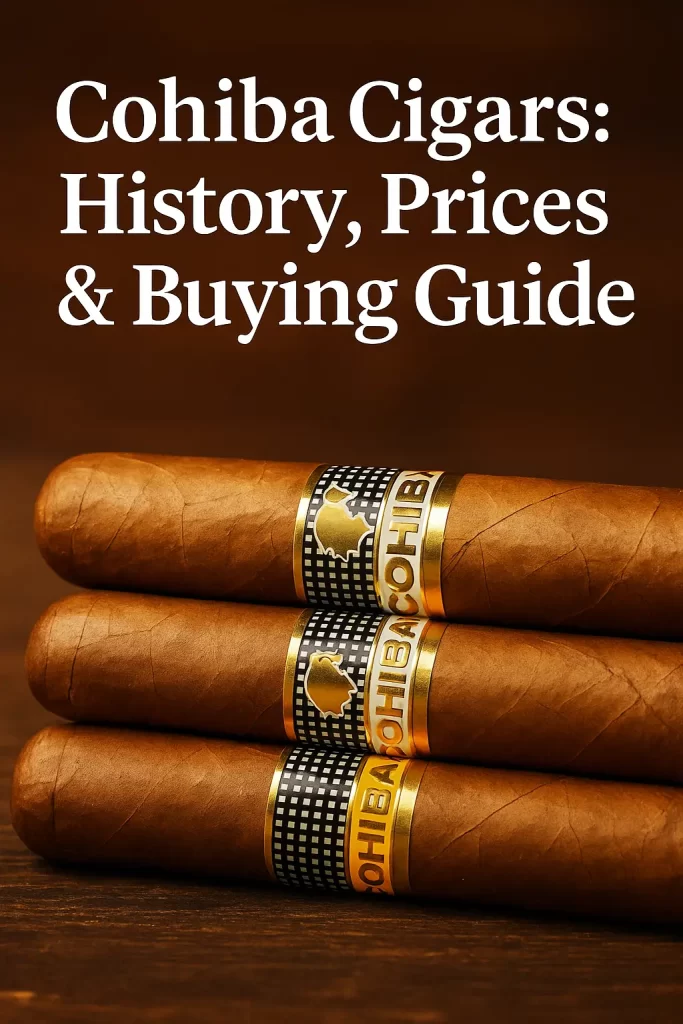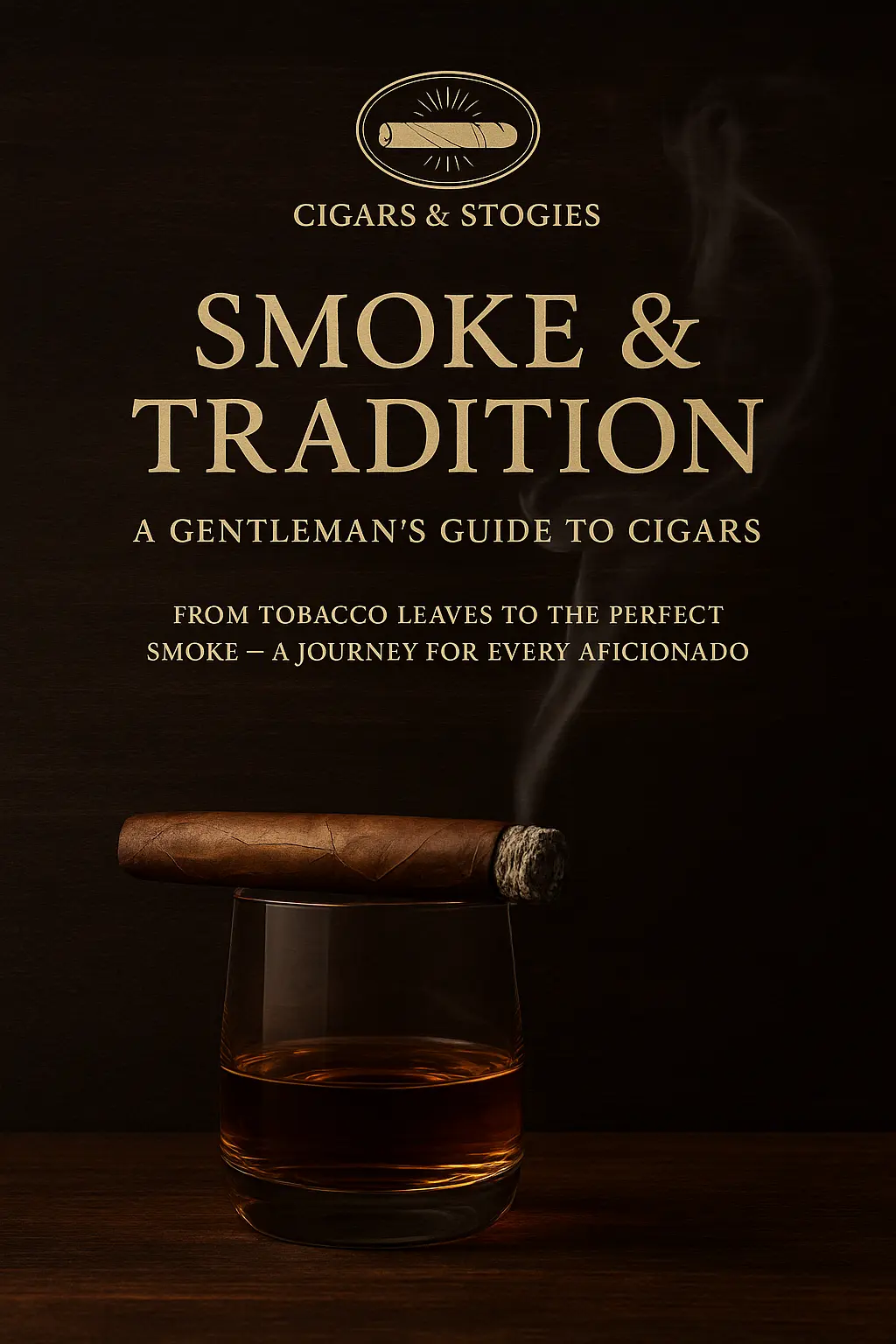Introduction: The Legacy of Cohiba Cigars
Few cigar names carry the same prestige and mystique as Cohiba cigars. For decades, this legendary brand has represented the pinnacle of luxury smoking — a name whispered among cigar aficionados and collectors alike. Whether you’re lighting up a genuine Cuban Cohiba or its Dominican counterpart, the experience evokes craftsmanship, heritage, and sophistication.
This comprehensive guide explores everything you need to know about Cohiba cigars — from their fascinating origins in Cuba to where you can buy them today, the various sizes and blends, their price ranges, and the legal limits for importing them into the United States.
1. The Origin and History of Cohiba Cigars
1.1 The Birth of a Legend
The story of Cohiba cigars begins in the 1960s, at the height of Cuba’s revolutionary era. The tale famously starts with Fidel Castro’s personal bodyguard offering him a hand-rolled cigar from a local roller named Eduardo Rivera. Castro was so impressed by its smooth, rich flavor that he ordered more from the same torcedor — and thus, the Cohiba brand was born.
Initially, these cigars were produced exclusively for government officials and visiting dignitaries. They weren’t available for public sale until 1982, when Cuba introduced the brand to the world at a trade fair in Spain, coinciding with the FIFA World Cup.
1.2 The Meaning Behind the Name
The word “Cohiba” is derived from the ancient Taino language of Cuba’s indigenous people, meaning “tobacco.” The name pays homage to the island’s deep-rooted cigar-making culture, dating back centuries before Columbus arrived.
1.3 The Cohiba Factory: El Laguito
Cohiba cigars are produced at the El Laguito factory in Havana — one of the most exclusive cigar factories in the world. This elegant yellow mansion was once a social club for wealthy women before becoming the birthplace of Cuba’s most elite cigar brand.
Inside El Laguito, only the most experienced cigar rollers, or torcedores, are trusted with making Cohibas. The process involves a unique triple fermentation method that refines the tobacco and results in Cohiba’s famously creamy texture and complex flavor.
2. The Split Between Cuban and Dominican Cohiba Cigars
2.1 The U.S. Embargo and the Rise of Two Brands
The 1962 U.S. trade embargo on Cuba meant that authentic Cuban Cohibas couldn’t legally enter the American market. In the 1980s, General Cigar Company registered the Cohiba trademark in the United States, creating a non-Cuban version made in the Dominican Republic.
This resulted in two distinct Cohiba lines:
Cuban Cohiba (Habanos S.A.) – Produced in Havana and considered the original.
Dominican Cohiba (General Cigar Co.) – Legal in the United States and crafted with high-quality Dominican, Nicaraguan, and Honduran tobaccos.
2.2 Flavor Differences
Cuban Cohibas are renowned for their earthy, creamy notes, with flavors of cedar, spice, and honey. Dominican Cohibas, while slightly different, offer rich, medium-to-full-bodied profiles with notes of leather, coffee, and cocoa.
Both lines maintain exceptional quality, but purists often revere Cuban Cohibas as the ultimate expression of cigar craftsmanship.
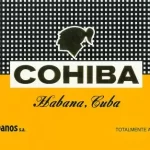
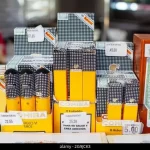
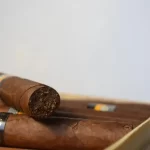
3. How to Identify Genuine Cohiba Cigars
3.1 Recognizing Authentic Cuban Cohibas
Counterfeiting is rampant, especially with Cuban Cohibas. To ensure authenticity:
Check the holographic band: Genuine Cuban Cohibas feature a three-dimensional hologram and a square “dot” pattern that shifts with light.
Inspect the box code: Authentic boxes have embossed seals, factory codes, and date stamps.
Examine the wrapper: True Cohibas have flawless, golden-brown wrappers with perfect seams.
Buy only from authorized retailers: Sites like Habanos.com list certified vendors worldwide.
3.2 Dominican Cohibas
Dominican versions are easier to verify, as they’re distributed by reputable U.S. retailers like JR Cigars, Thompson Cigar, Famous Smoke Shop, and Cigars International. Their packaging includes clear branding, UPC codes, and General Cigar Co. trademarks.
4. Where to Buy Cohiba Cigars
4.1 Authorized Retailers and Online Shops
If you’re purchasing in the United States, you’ll be buying Dominican Cohiba cigars. The top trusted online stores include:
Each of these sellers offers a wide range of Cohiba lines, including Cohiba Blue, Cohiba Connecticut, and Cohiba Royale.
For those abroad or in Cuba, Habanos S.A. stores and La Casa del Habano franchises are the official Cuban Cohiba distributors. You’ll find these in major cities like Havana, London, and Madrid.
4.2 Cohibas in Duty-Free Shops
Travelers can purchase Cuban Cohibas at international airport duty-free shops, especially in Europe, Canada, and Latin America. However, import restrictions apply when bringing them back into the United States (covered below).
5. How Many Cohiba Cigars Can You Bring Into the U.S.?
5.1 The Law on Cuban Cigars
As of 2020, Cuban cigars are no longer legally importable into the U.S., even for personal use. The earlier relaxation under the Obama administration was reversed, reinstating the full ban on Cuban tobacco and alcohol products.
This means:
You cannot bring Cuban Cohiba cigars into the U.S., even if purchased legally abroad.
They may be confiscated by U.S. Customs.
Fines and penalties can apply for repeat violations.
5.2 Non-Cuban Cohibas
You can legally import Dominican Cohiba cigars purchased abroad, provided they are not of Cuban origin. The general limit for personal tobacco imports is 100 cigars (five boxes) per traveler, as long as they are not intended for resale.
5.3 Tips for Travelers
Always declare cigars at customs.
Keep receipts to prove non-Cuban origin.
Avoid mixing brands in the same box.
Know that “Cohibas” bought on Caribbean beaches are almost always counterfeit.
6. Cohiba Cigar Sizes and Vitolas
Cohiba cigars come in numerous vitolas (sizes and shapes), each influencing draw, burn rate, and flavor concentration. Below is an overview of the most famous Cohiba cigars:
| Cigar Name | Length (inches) | Ring Gauge | Profile | Approx. Price (USD) |
|---|---|---|---|---|
| Cohiba Robusto | 4.9 | 50 | Medium-Full | $45–$55 (Cuban), $20–$25 (Dominican) |
| Cohiba Siglo VI | 5.9 | 52 | Full | $60–$80 (Cuban) |
| Cohiba Espléndidos | 7 | 47 | Medium | $75–$100 |
| Cohiba Behike 52/54/56 | 4.7–6.5 | 52–56 | Full | $150–$250 |
| Cohiba Red Dot Corona | 5.1 | 42 | Medium | $12–$16 |
| Cohiba Blue Toro | 6 | 54 | Medium | $10–$14 |
| Cohiba Royale Toro | 6 | 50 | Full | $25–$30 |
| Cohiba Connecticut Robusto | 5 | 50 | Mild-Medium | $14–$18 |
The Cohiba Behike line represents the pinnacle of the brand, using rare “medio tiempo” leaves that appear only at the top of select tobacco plants. These cigars are highly collectible and among the most expensive in the world. Check out our previous post on cigars shapes and sizes.
7. How Much Do Cohiba Cigars Cost?
7.1 Cuban Cohibas
Cuban Cohibas are priced as luxury items, typically ranging from $40 to $200 per cigar, depending on size and rarity. Limited editions (Edición Limitada or Reserva) often exceed $500 each at auction.
A box of 25 Cohiba Siglo VI cigars, for example, might cost between $1,200–$1,800 in Havana’s official stores.
7.2 Dominican Cohibas
Dominican Cohibas are more accessible, generally costing:
$10–$18 for the Cohiba Blue line.
$20–$30 for Cohiba Royale or Cohiba Nicaragua.
$12–$16 for Cohiba Connecticut.
These cigars provide a luxurious experience at a more affordable price point and are available online across the U.S.
8. Cohiba’s Most Popular Lines and Collections
8.1 Cuban Cohiba Lines
Cohiba Línea Clásica: The original line introduced in 1982; includes the Espléndidos, Robustos, and Coronas Especiales.
Cohiba Línea 1492 (Siglo Series): Launched in 1992 to commemorate Columbus’ voyage. Siglo I through VI represent increasing size and strength.
Cohiba Maduro 5: Introduced in 2007 with aged wrapper leaves, offering rich chocolate and espresso tones.
Cohiba Behike: Ultra-premium line introduced in 2010, considered one of the finest cigars ever made.
8.2 Dominican Cohiba Lines
Cohiba Red Dot: The flagship U.S. blend known for balance and sweetness.
Cohiba Black: A darker, bolder profile with Connecticut Broadleaf wrapper.
Cohiba Nicaragua: Nicaraguan-grown tobaccos offering spicy, earthy notes.
Cohiba Royale: Full-bodied luxury with rich, creamy smoke.
Cohiba Blue: Smooth and approachable — perfect for beginners.
9. Storing and Aging Your Cohiba Cigars
Cohiba cigars, whether Cuban or Dominican, are best enjoyed when properly stored.
To maintain freshness:
Humidity: Keep cigars at 65–70% relative humidity.
Temperature: Maintain around 68–70°F.
Humidor: Store them in a Spanish cedar humidor for optimal preservation.
Aging: Premium Cohibas age beautifully. Many collectors store them for 3–5 years to enhance complexity and smoothness.
Properly aged Cohibas develop richer notes of honey, cocoa, and leather, making them smoother and more nuanced over time.
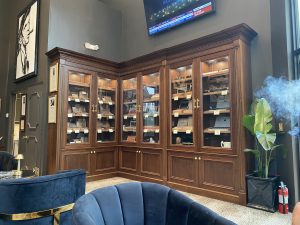
10. The Allure and Cultural Symbolism of Cohiba Cigars
Cohiba cigars transcend tobacco — they’re cultural icons. They’ve been smoked by world leaders, musicians, and movie stars, from Fidel Castro and Che Guevara to Jack Nicholson and Jay-Z. The brand embodies confidence, craftsmanship, and indulgence.
Owning a box of Cohibas isn’t just about luxury — it’s about connecting to a half-century of cigar-making heritage that began in the lush tobacco fields of Pinar del Río and continues in the humidors of collectors worldwide.
11. Conclusion: Why Cohiba Cigars Remain the Gold Standard
Whether you prefer the authentic Cuban variety or the refined Dominican blend, Cohiba cigars remain synonymous with elegance and excellence. Their unparalleled construction, legendary flavor, and historic prestige make them the benchmark by which all other cigars are judged.
For those seeking to experience cigar perfection, few names command the same respect as Cohiba. From the distinct aroma of a freshly lit Robusto to the timeless story of El Laguito, Cohiba is not merely a cigar — it’s a legacy wrapped in tobacco.

